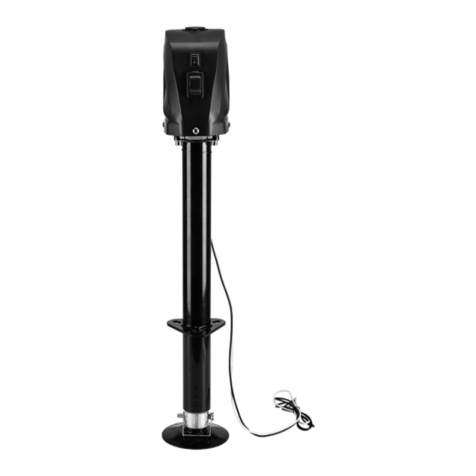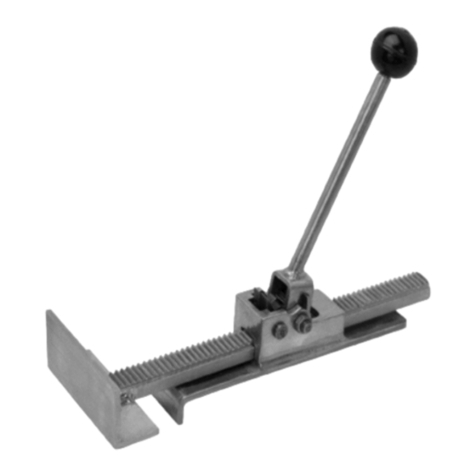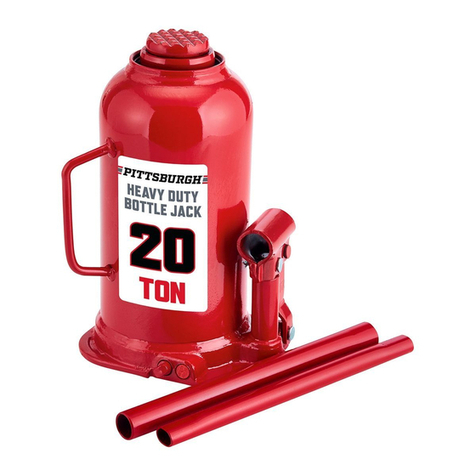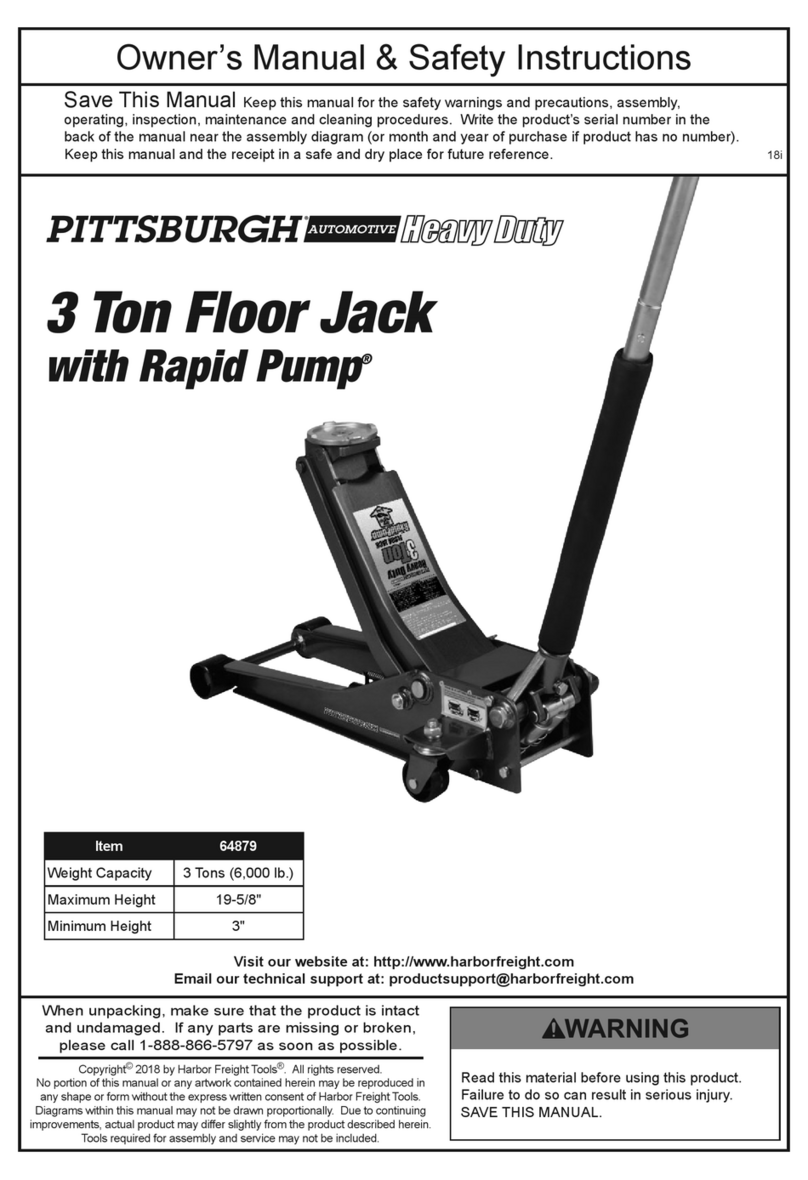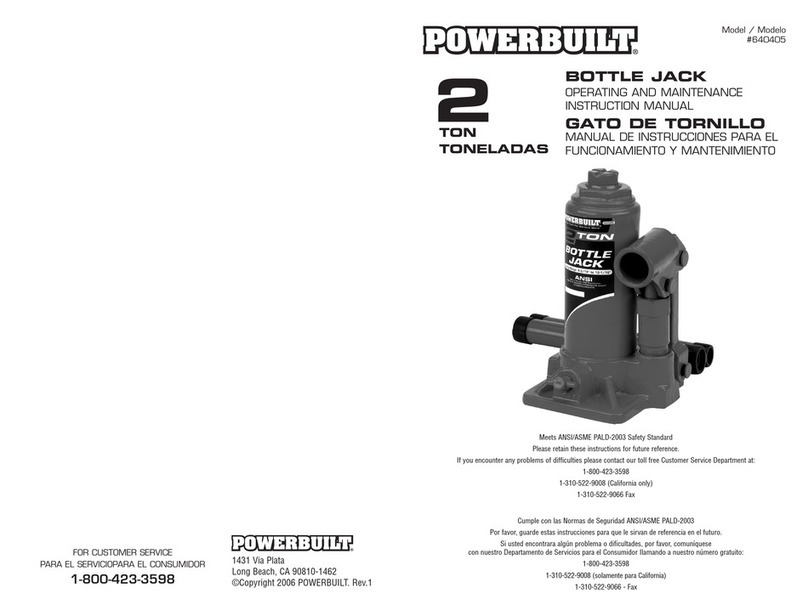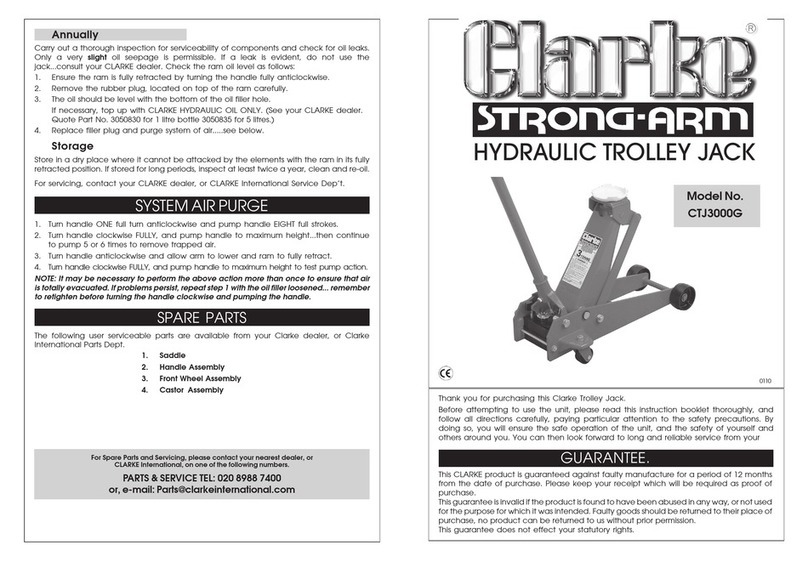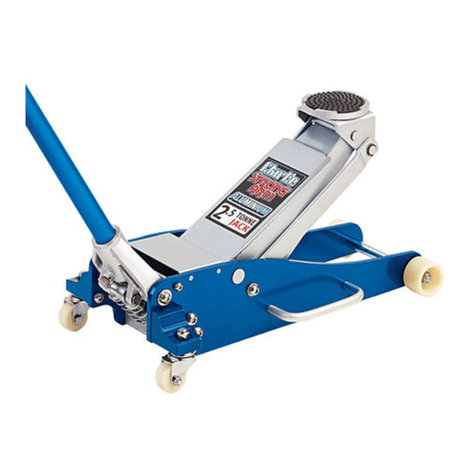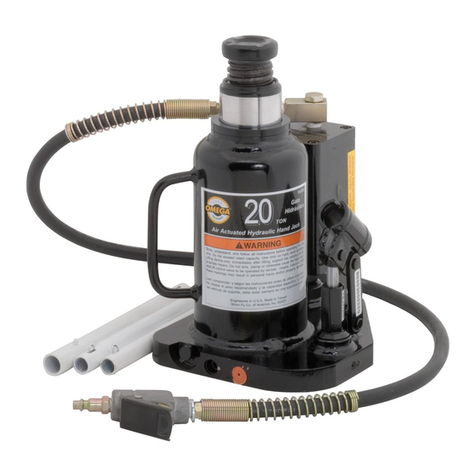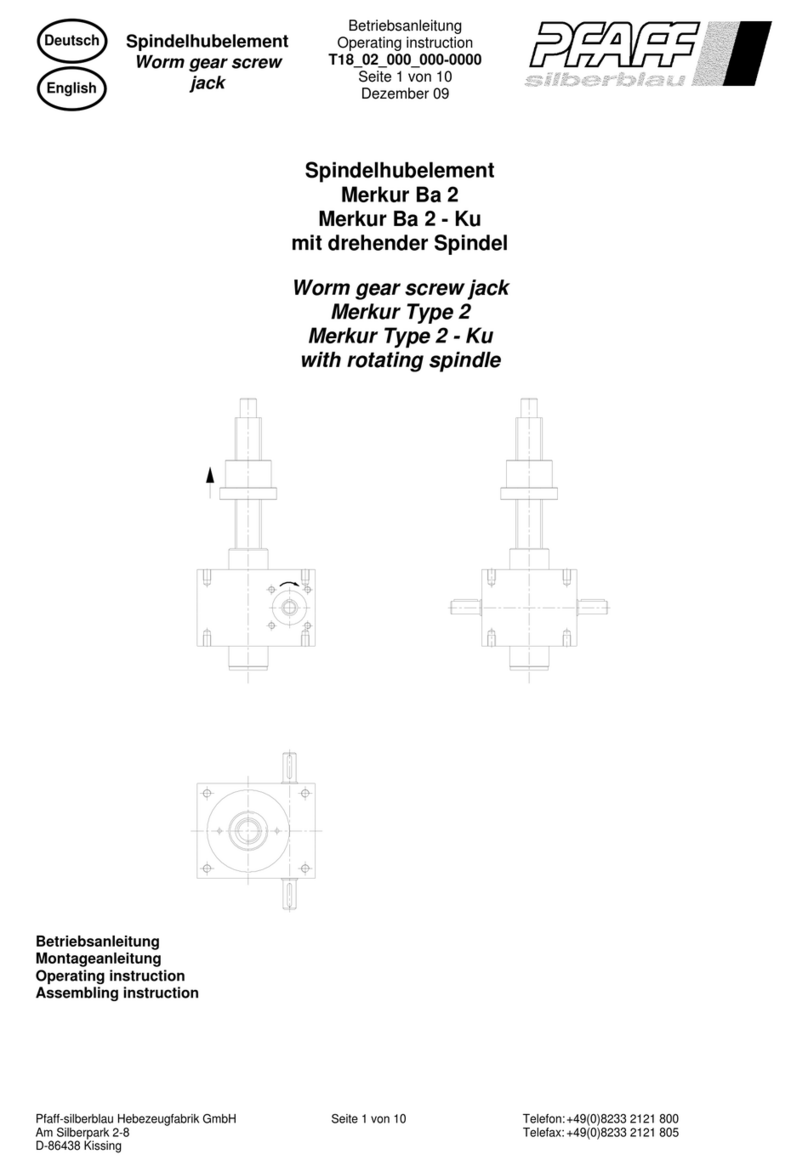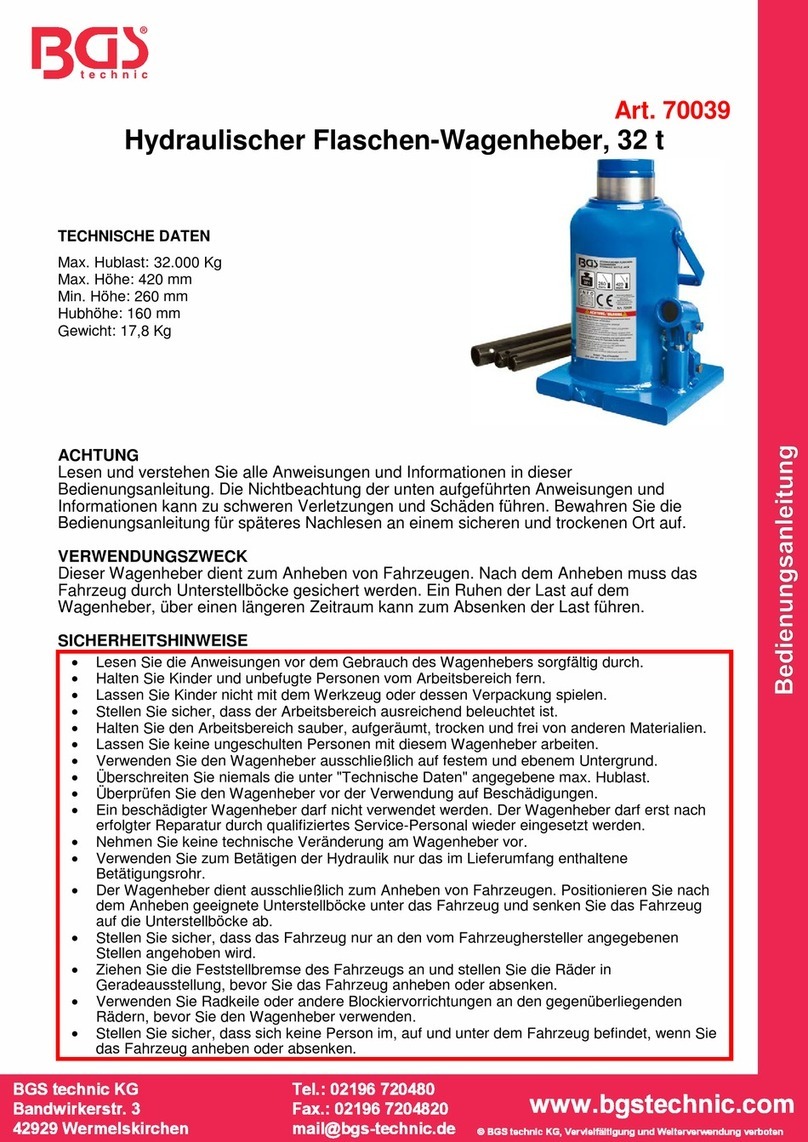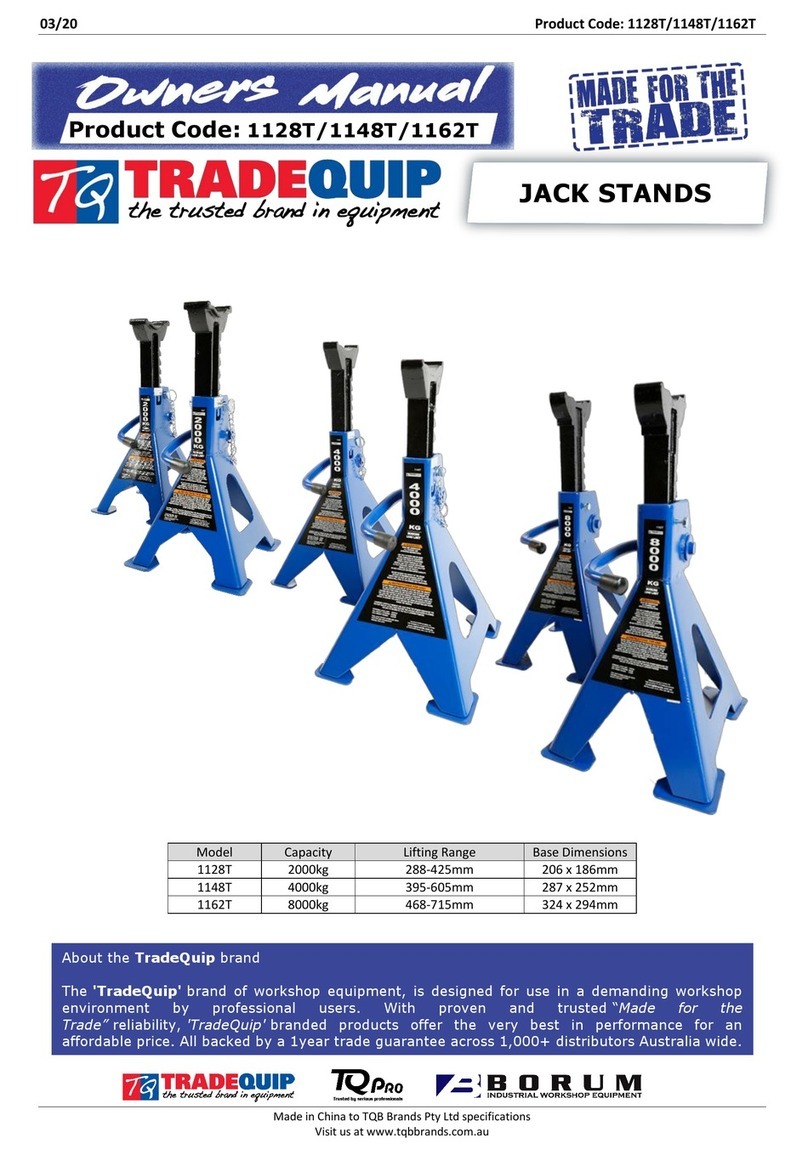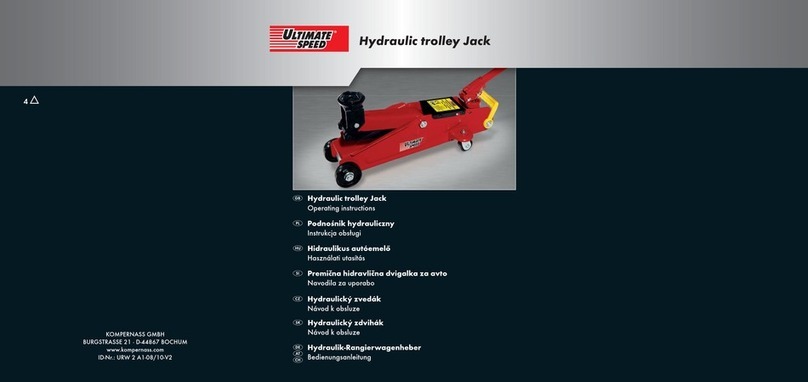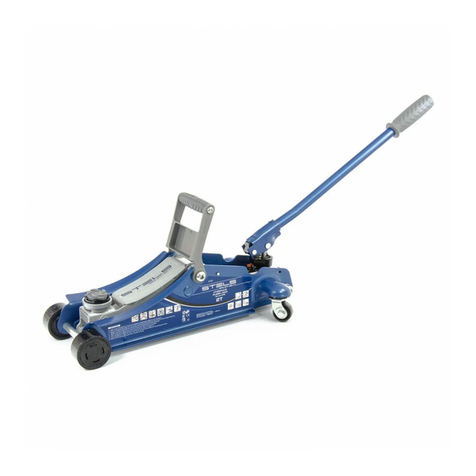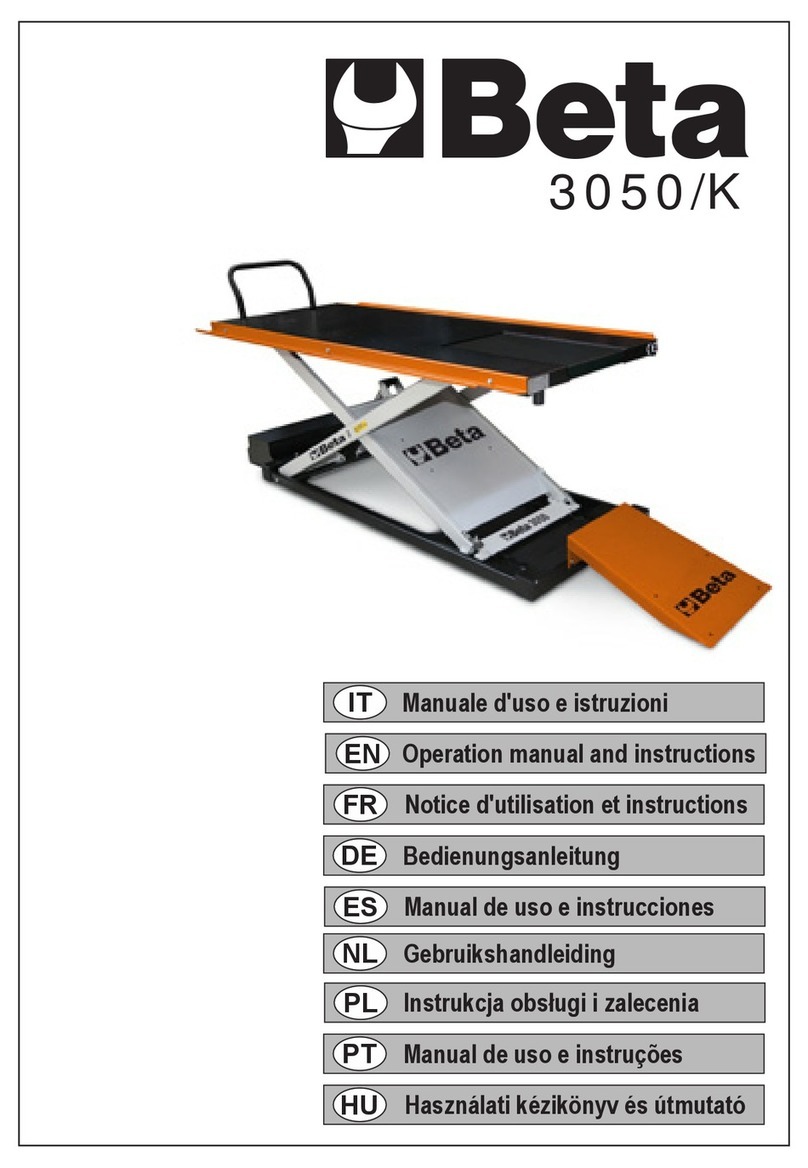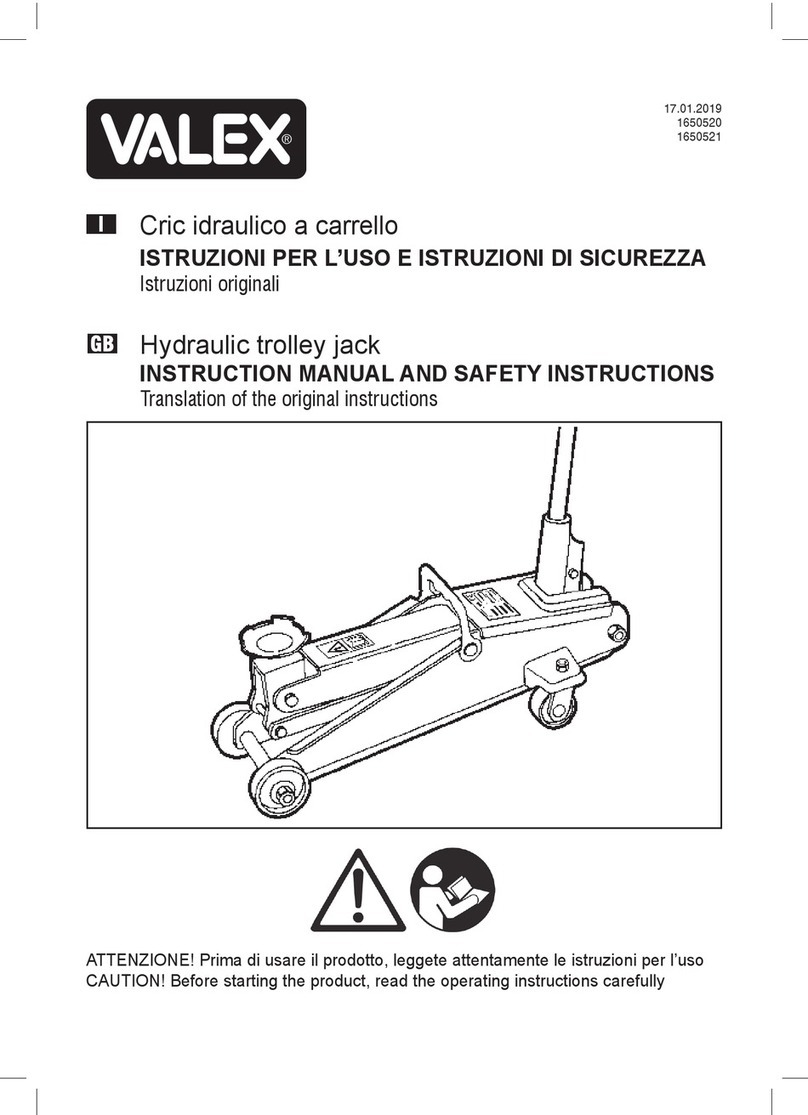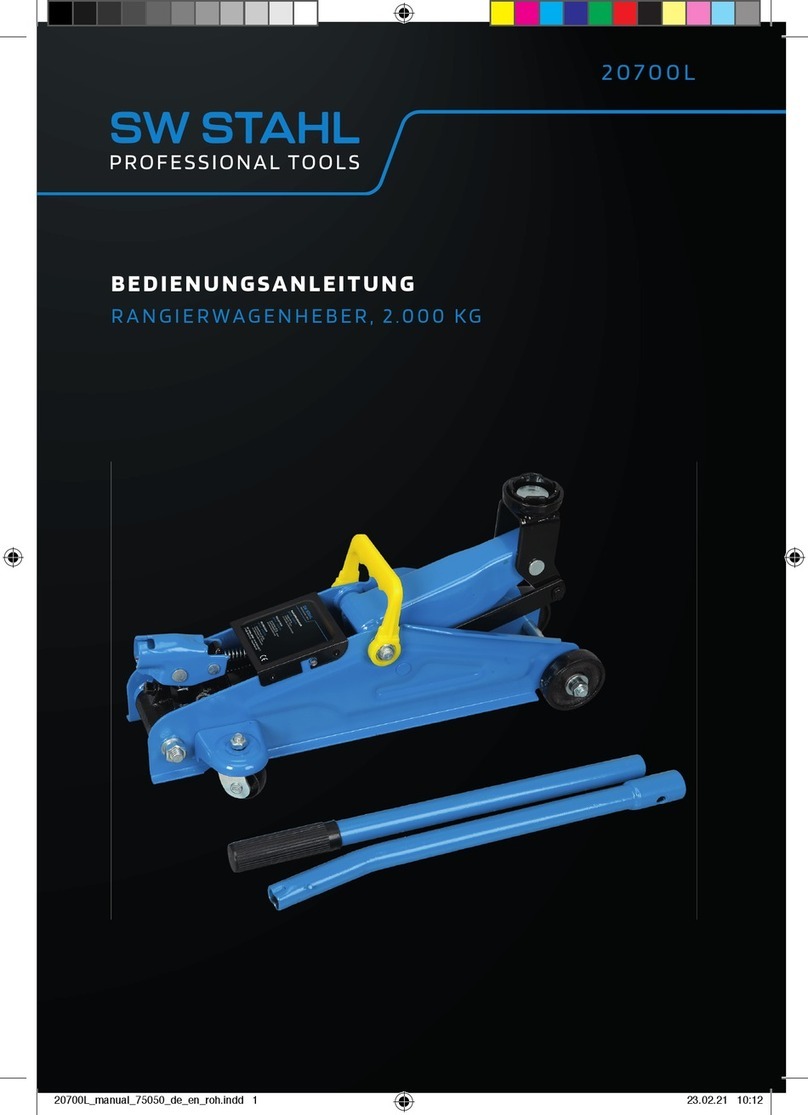
Page 4
SKU 03185
Additional Transmission Jack Warnings
1. The use of this Jack is limited to the removal, installation, and transportation in the lowered
position, of transmissions and differentials. No alteration to the Jack or
adapters shall be made.
2. Be sure the vehicle is appropriately supported before starting repairs.
3. Do not overload. Overloading can cause damage to or failure of the Jack.
4. Only attachments and/or adapters supplied by the manufacturer shall be used.
5. This Jack is designed for use on hard, level concrete surfaces capable of sustaining the
load. Use on other than hard, level surfaces can result in Jack instablility and possible loss of
load.
Warning!! Failure to heed these warnings may result in loss of load, damage to the
Jack, and/or failure resulting in property damage, personal or fatal injury.
Do not ever exceed the 800 Lb. maximum weight capacity.
Operation
2. Attach the Chain (#1A) to one
of the tabs under the Upper Plate
(Assembly Drawing on page 7) by threading
a bolt through both tabs and securing
with a nut. Note: Secure it using the last
link on one side of the chain. The linkyou
use to secure the other side will be dependent
on the size of the individual transmission
you secure to the unit.
Note: There are tabs on both sides of the Upper Plate.
The second set is for securing the Chain (#1A) after
the transmission is in place.
Lowering a transmission onto theTransmission Jack.
Note: Every time you use the Transmission Jack, see that the unit is filled with hydraulic oil.
See step 2 on page 6.
1. Once the vehicle is secured and raised on a hoist, clear the area underneath the vehicle of
people and tools.
2. Wheel the Transmission Jack under the transmission.
3. Allow the Chain (#1A) to hang to the floor still attached to one end of the Upper Plate.
4. To raise the unit, close the ReleaseValve (#29) on the Power Unit (See Assembly Drawing
on page 9). Pump the Handle (#5A) to raise the Transmission Jack. Stop just below the
transmission and level the Upper Plate with the adjusting knobs (See FIGURE 1). Turning
Knob A clockwise will tilt the Upper Plate up, raising the left side. Counterclockwise will bring
it back to level. Turning Knob B clockwise will tilt the back of the Upper Plate up, and turning
it counterclockwise will return it to a level position.
Finger (#2A) Chain (#1A)
Upper Plate
Bolt and Washer
FIGURE 1
Knob A
Knob B
Assembly of the Fingers (#2A) and the Chain (#1A).
See FIGURE 1 and the Assembly Drawing on page 7.
1. Set the hole on the Finger (#2A) over a corner hole on the Upper Plate (See FIGURE 1).
Secure it by threading in a bolt and washer(4 Qty.) from the hardware bag.Repeat on the other
three corners.
03185.p65 2/26/2003, 9:08 AM4
Brought To You By Augusta Flint

